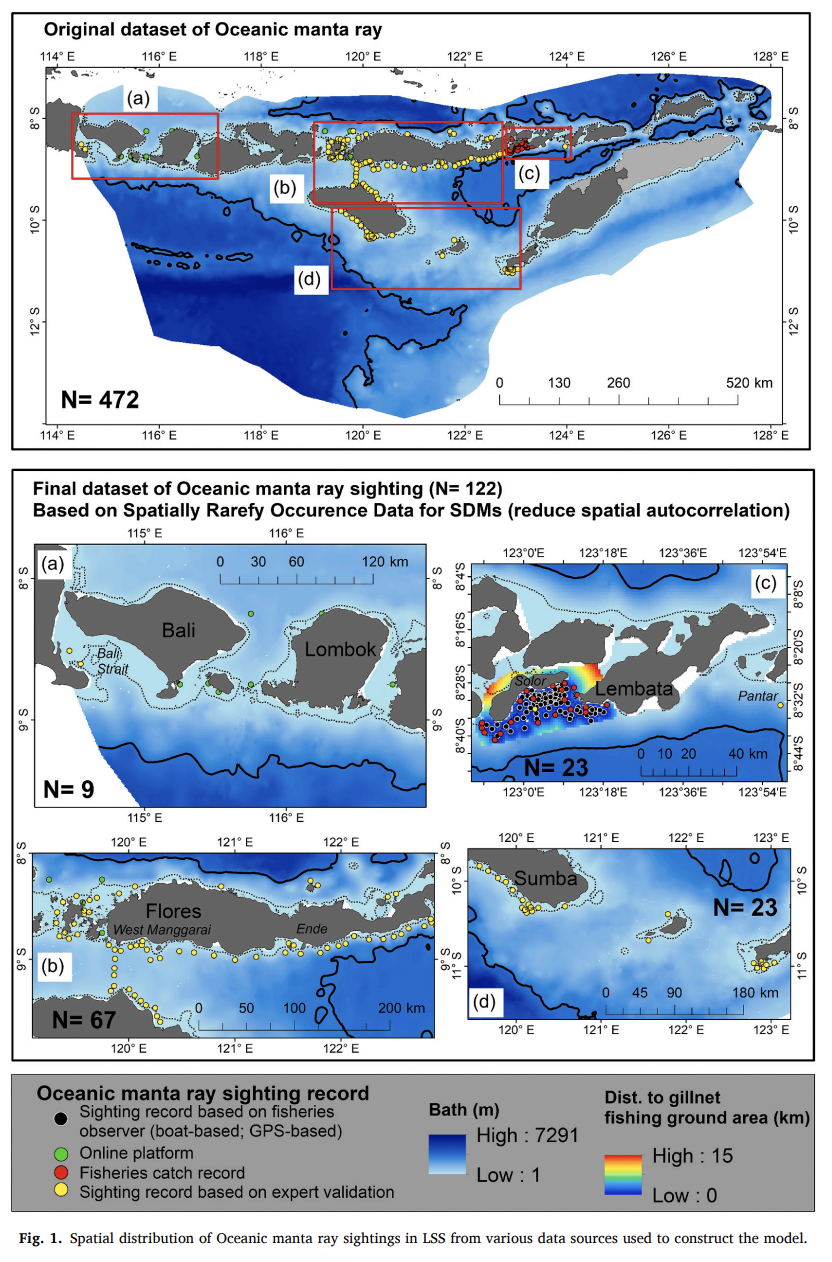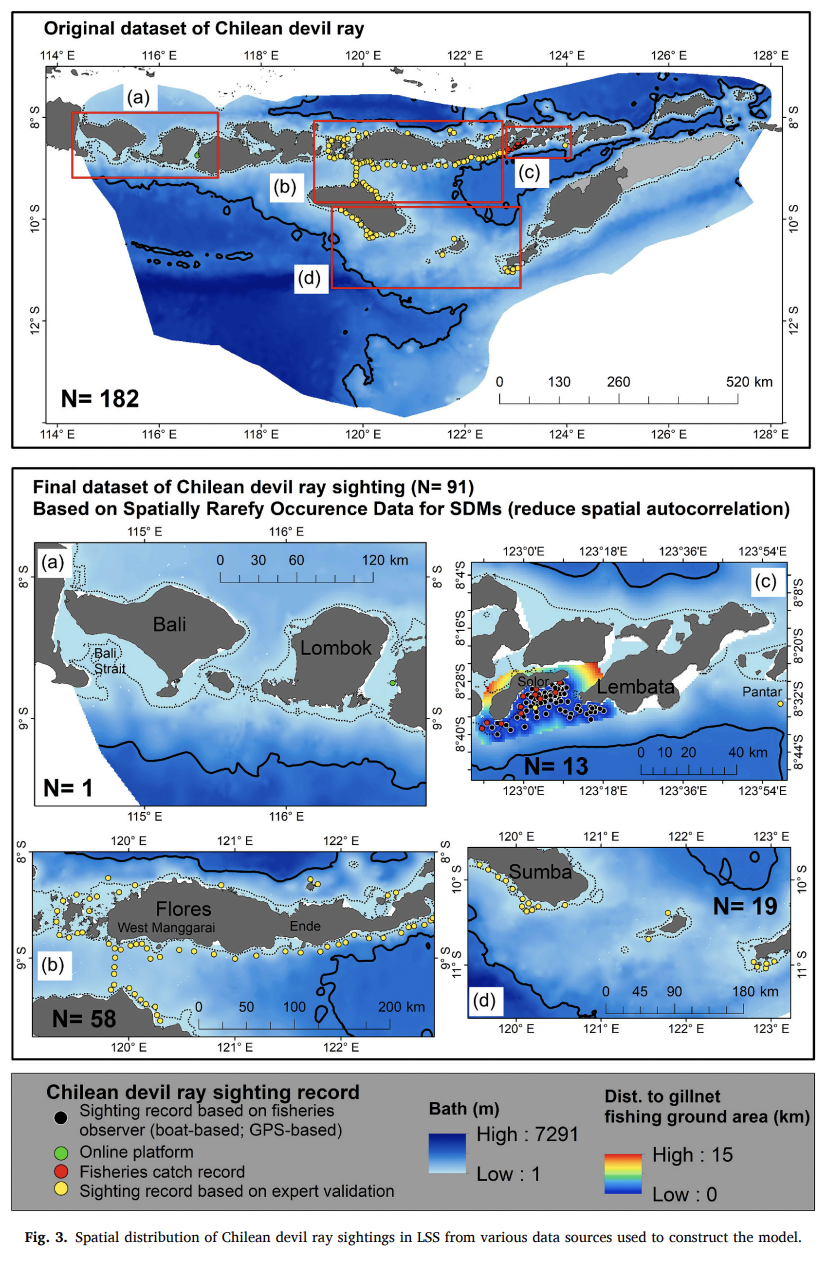Predicting mobulid ray distribution in coastal areas of Lesser Sunda Seascape: Implication for spatial and fisheries management
December 2020
Mochamad Iqbal Herwata Putra, Edy Setyawan, Betty J. L. Laglbauer, Sarah Lewis, Dharmadi Dharmadi, Abraham Sianipar & Isabel Ender
Keywords: Conservation • Ecological Niche Model • Fisheries Spatial Management • Habitat Preference • Mobula birostris • Mobula mobular • Mobula tarapacana
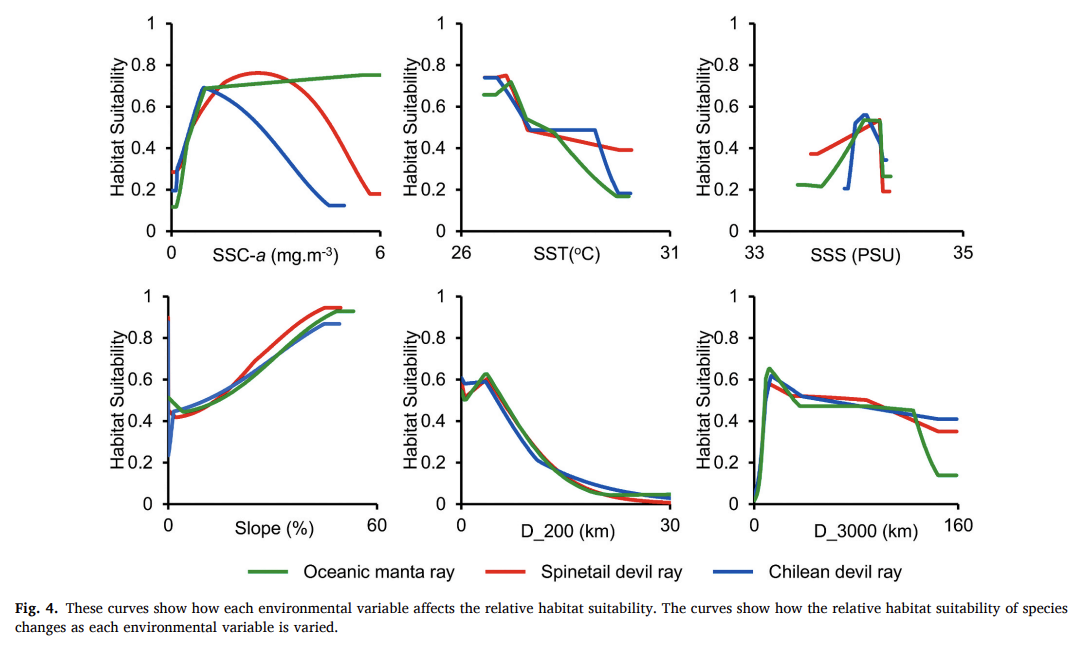
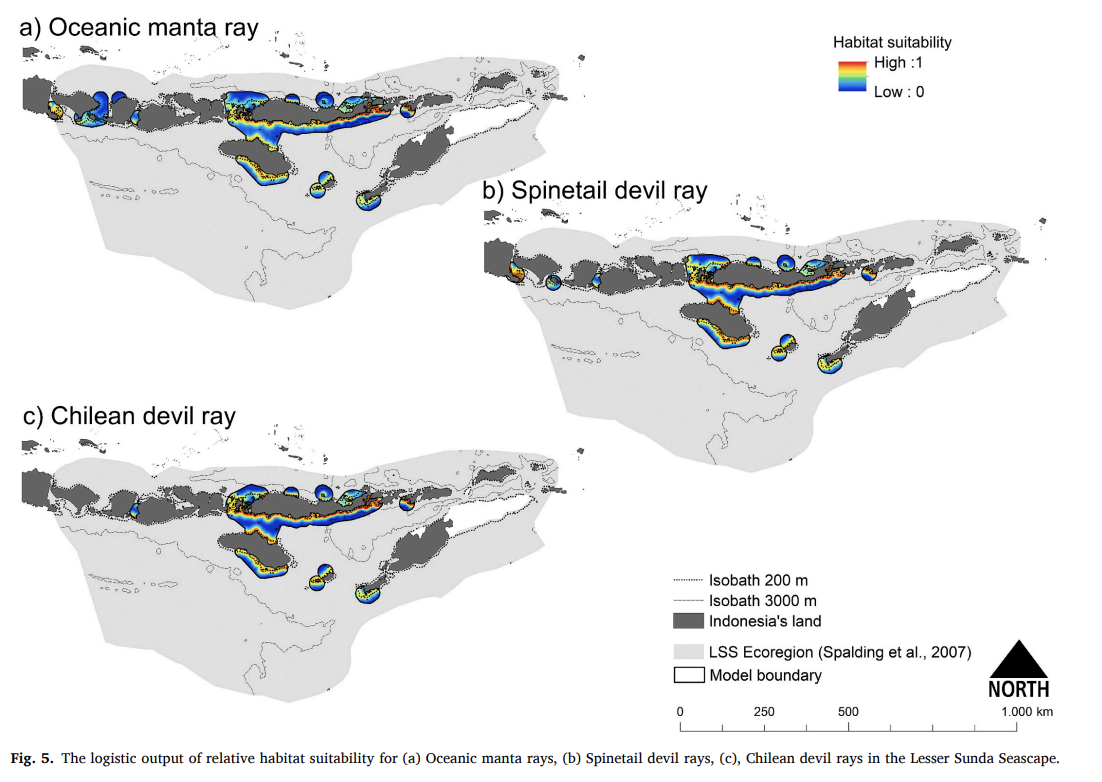
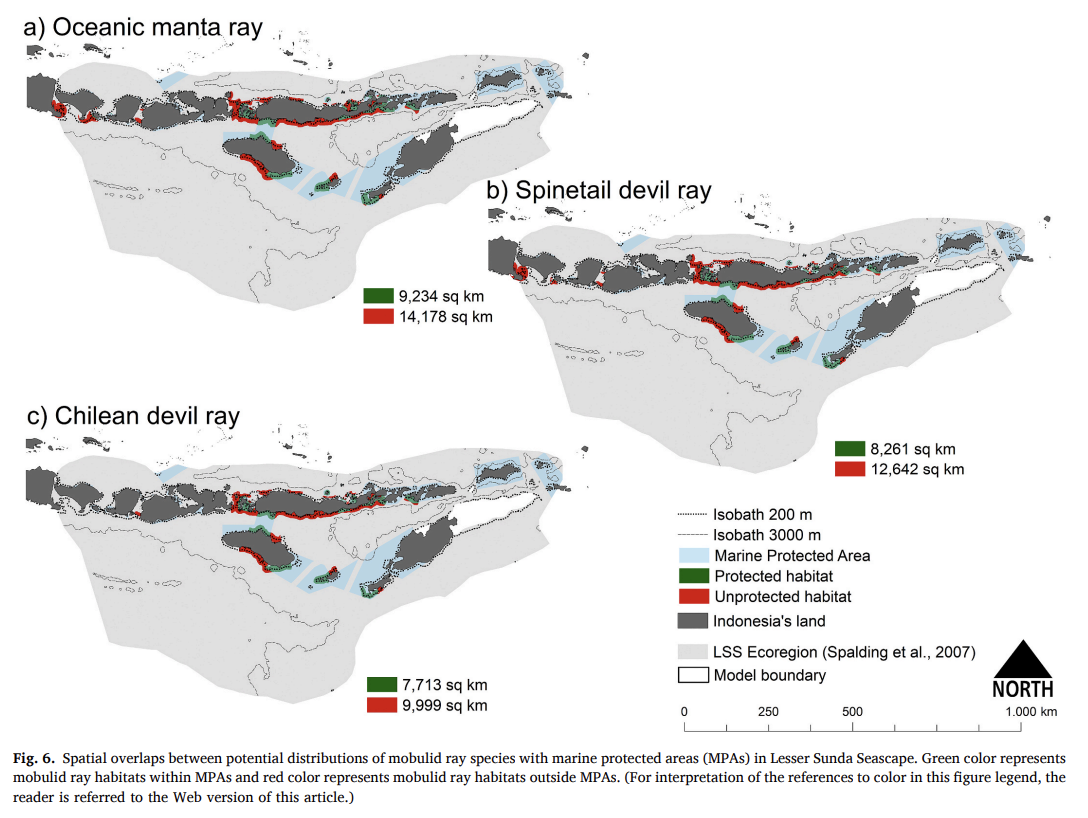
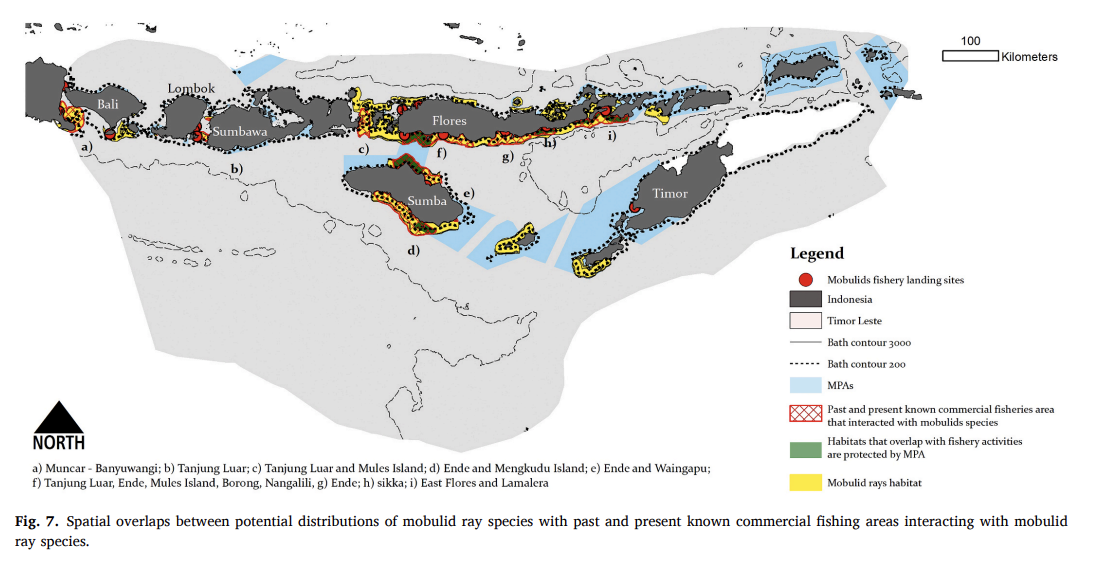
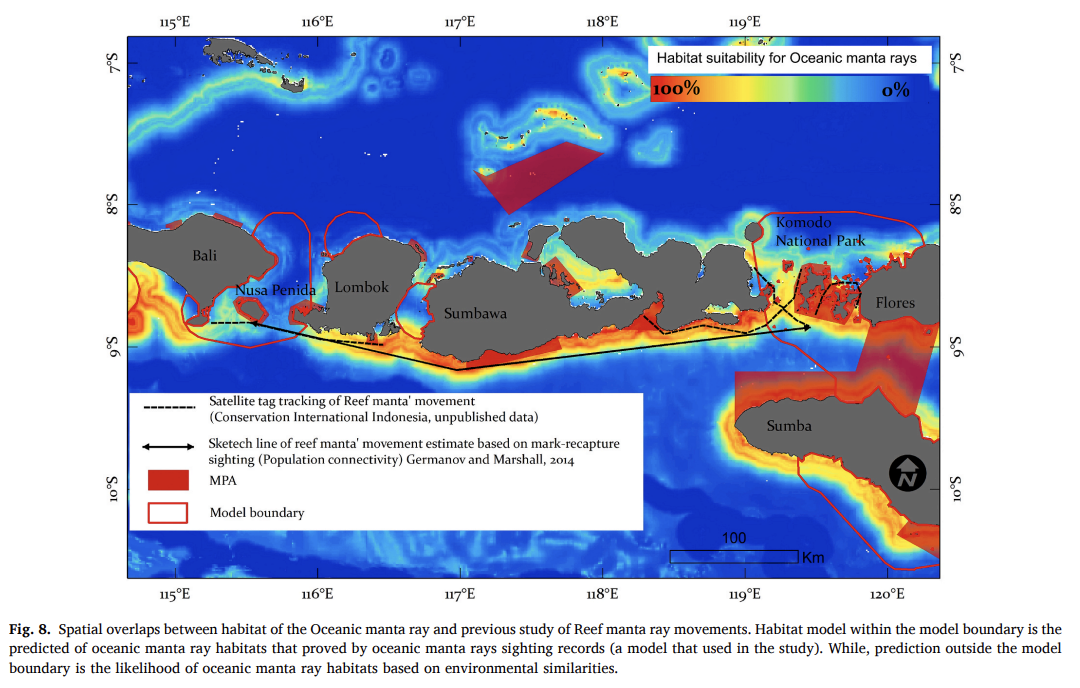
Summary: This study aimed to understand the habitat preference and distribution of mobulid rays in the Lesser Sunda Seascape (LSS) coastal area. Using multiple data sources and a maximum entropy model, significant predictors including chlorophyll-a concentration, temperature, salinity, and distance to specific isobaths were identified. The study confirmed that mobulid rays preferred areas near the 200-m isobath with higher prey density. Overlaps between habitat models and fisheries activity indicated important mobulid habitats. The findings emphasise the need for species-specific management measures and improved marine protected area design, suggesting the inclusion of large-scale commercial fisheries data and consideration of offshore and high seas habitats.
Abstract
“The Lesser Sunda Seascape (LSS) is considered one of the regions with the largest mobulid fisheries in Indonesia, although their spatial distribution and habitat preference in the LSS is still largely unknown. The goal of the present study was to describe the habitat preference and distribution of the oceanic manta rays, spinetail devil rays, and Chilean devil rays in the coastal area of LSS. We used multiple data sources of mobulid ray sightings and selected significant environmental predictors to execute the maximum entropy model. The model performed well in predicting mobulid ray habitat in the coastal area of LSS and indicated that sea-surface chlorophyll-a (SSC-a), sea-surface temperature (SST), sea-surface salinity (SSS), distance to the 200-m isobath, distance to the 3000-m isobath, and slope were all significant environmental predictors of their distribution. This study confirms that the habitat preference of mobulid rays were in the areas that close to the 200-m isobath and with higher chlorophyll-a concentration as proxy for their prey density. Combining habitat models with fisheries activity records indicated that the areas where these overlaps may represent key mobulid habitats. This study highlights a critical need for species-specific and populations-level management measures for Indonesian mobulid rays, whereas current MPA design has focused on a broad-scale coastal ecosystem management approach, which may have limited effectiveness in practice. This study provides valuable information for the improvement of MPA design and fisheries management tools, through maximum entropy modeling as a powerful means to describe species’ distributions and habitat preference. We recommend that future efforts focus on documenting and incorporating data from large-scale commercial fisheries to improve our knowledge of habitat preference and distribution models in offshore areas and the high seas, and to assess the preference for coastal versus oceanic habitats.”
Author Affiliations
Marine Megafauna Research Group, Misool Foundation, Savu Sea Program
Institute of Marine Science, The University of Auckland
The Manta Trust
Okeanos Centre of the University of the Azores, Department of Oceanography and Fisheries
School of Biomedical Sciences, The University of Queensland
Indonesian Manta Project, The Manta Trust
Sea Sanctuaries Trust
Center for Fisheries Research, Agency for Marine Research and Human Resources, Ministry of Marine Affairs and Fisheries Indonesia
Conservation International
Funded by
Conservation International Indonesia
The Manta Trust
WWF Indonesia
Misool Foundation

